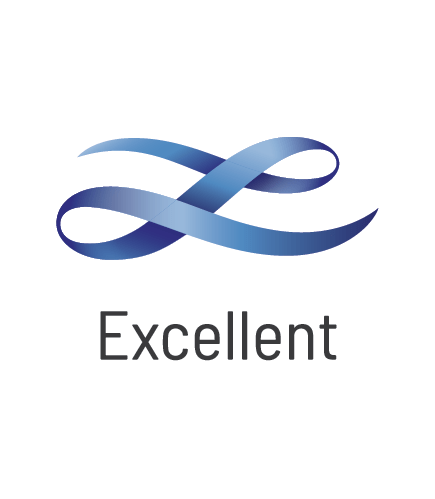Château Smith-Haut-Lafitte Pessac-Léognan
An upswing in quality over the past decade or so, has resurrected Chateau Smith-Haut-Lafitte's position amongst Bordeaux Chateau. New ownership breathed life into exceptionally positioned vineyards, now farmed with less chemicals, with a more sympatico approach in winery. Famed winemaking consultant Michel Rolland is an additional feather in Smith-Haut-Lafitte's cap, enhancing the wines concentration, power and depth, while maintaining a finesse. Though full-bodied, the wine from 2010 will be approachable a little earlier than most other fine Bordeaux, with more moderate tannin - that being said, it's life will stretch several decades too.
Yalumba The Caley Cabernet Shiraz
Yalumba The Caley Cabernet Shiraz is the pinnacle of a long winemaking journey of excellence, that rightfully honours one of Yalumbas most adventurous sons. A blend of Coonawarra Cabernet Sauvignon and Barossa Shiraz, The Caley is a classic marriage of two noble varieties and two great Australian wine regions.
Yarra Yering Dry Red No 2
From some of the earliest plantings of Shiraz in the Yarra Valley with vines dating back to 1969. Shiraz (96%) co-fermented with small parcels of Viognier, Marsanne and Mataro aged 12 to 18 months in 50% new French oak barrels produces a wine that is perfumed and feminine with the tannins and acidity as integral to the wine as the fruit. Proven to age for 25+ years, Yarra Yering Dry Red No 2 was the first Cote Rotie style blend made in Australia
Château Pontet-Canet Pauillac
Château Pontet-Canet is a classic large Pauillac property that adjoins the Mouton Rothschild vineyards that in the past has struggled to get fruit richness into their wines until Michel Rolland was called in. The wines of the past 15 years have produced lovely, voluptuous reds with ripe fruit and brilliant balance. The 2009 is quite simple a stunning incarnation of Pontet-Canet and quite possibly their best wine ever produced! A 'tour de force' of the highest standard, layers of concentrated fruit along with sublime oak integration see this biodynamically farmed vineyard reach Bordeaux perfection. Will age comfortably for the next 50 years.
Château Canon St-Émilion
Chateau Canon shows no shy and retiring character in 2010, set to a naturally ripe and high 15% alcohol. Though power and density is a motif in 2010, there is a surprising suppleness in this wine, born from central St-Emillion vineyards and the same family of wine as Chateau Rauzan-Segla of Margaux. Almost evenly split between Merlot and Cabernet Franc usually, it''s three quarters Merlot in 2010; the wine matures in oak barrel for 18 months, with around 70% of those offering new wood character. While dense and compact, there is a succulence to the wine that suggests cellaring to two decades would be apt.
Château Léoville-Barton Saint-Julien
Château Léoville-Barton is one of the oldest Château's in Saint Julien with the Barton family still owning the estate some 175+ years since they took stewardship of the property. Always a finely perfumed wine is produced with rich and powerful tannin that gives way to beautiful fruit and richness of flavour with aging. This is especially the case when speaking of the remarkable 2009 vintage which is being classified as one of the very best of the past 100 years. Take advantage of such a vintage with wines like Léoville's that won't break the Bordeaux bank.
Château Ducru-Beaucaillou Saint-Julien
Standing out from the crowd with its distinctive yellow/brown label, Château Ducru-Beaucaillou was the first second growth producer to break away from the crowd and start to attract higher prices and create the
LES FORTS DE LATOUR Second wine of Chateau Latour
Château Smith-Haut-Lafitte Rouge
An upswing in quality over the past decade or so, has resurrected Chateau Smith-Haut-Lafitte's position amongst Bordeaux Chateau. New ownership breathed life into exceptionally positioned vineyards, now farmed with less chemicals, with a more sympatico approach in winery. Famed winemaking consultant Michel Rolland is an additional feather in Smith-Haut-Lafitte's cap, enhancing the wines concentration, power and depth, while maintaining a finesse. Though full-bodied, the wine from 2010 will be approachable a little earlier than most other fine Bordeaux, with more moderate tannin - that being said, it's life will stretch several decades too.
M Chapoutier Les Greffieux Ermitage
The Chapoutier Estate has been present in the Rhone Valley since 1808, always on a quest to find different tastes and expressions of terroir, or sense of place. Hermitage is regarded by some as the greatest expression of Shiraz from anywhere in the world. If you're a Shiraz lover and haven't yet explored the wines of the Northern Rhone, you're simply missing out.




















